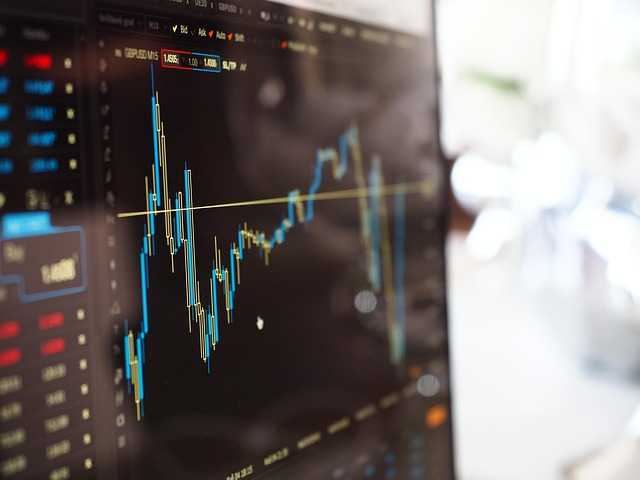Average Daily Trading Volume Calculation in 2025: A Comprehensive Guide
Author: Jameson Richman Expert
Published On: 2025-08-17
Prepared by Jameson Richman and our team of experts with over a decade of experience in cryptocurrency and digital asset analysis. Learn more about us.
The average daily trading volume (ADTV) continues to be a fundamental metric in financial markets, providing critical insights into liquidity, investor engagement, and market stability across a broad spectrum of asset classes—including equities, cryptocurrencies, commodities, derivatives, and emerging tokenized assets. As we approach 2025, technological innovations such as high-frequency trading (HFT), decentralized finance (DeFi), cross-chain interoperability, and blockchain analytics have profoundly transformed how traders, analysts, and institutional players interpret volume data. Accurate calculation techniques, advanced analytical models, and real-time data streams have become indispensable tools for making informed decisions. This comprehensive guide explores sophisticated methodologies for calculating ADTV, discusses its layered significance in modern markets, and considers how evolving market structures and technology influence volume analysis in 2025’s dynamic digital environment.

What Is Average Daily Trading Volume?
The average daily trading volume measures the mean quantity of units—be it shares, tokens, contracts, or other financial instruments—exchanged over a specified period, commonly 30, 60, or 90 days. This statistic acts as a crucial proxy for market liquidity, signaling how actively a security or asset is traded. For example, in cryptocurrency markets, elevated daily volumes facilitate rapid execution of sizable trades with minimal slippage, thereby promoting efficient price discovery while deterring manipulative practices. Similarly, in traditional equity markets, higher ADTV often correlates with narrower bid-ask spreads, enabling both institutional and retail investors to execute large orders smoothly. Beyond liquidity, volume data reveals investor interest, market sentiment, and potential volatility, making it an essential component for traders, portfolio managers, and regulators alike. With the advent of digital assets and cross-asset trading, understanding and accurately calculating ADTV remains vital for navigating complex, multi-layered markets.
The Significance of Accurate ADTV Calculation in 2025
By 2025, the role of precise ADTV measurement extends well beyond basic liquidity assessment. It underpins strategic trading, risk management, and sophisticated financial modeling in an increasingly automated and interconnected marketplace. The key dimensions of its evolving importance include:
- Market Liquidity & Efficiency: Precise volume data enables optimal execution strategies, especially for large institutional orders. Algorithms depend on reliable volume trends to facilitate order slicing, minimize market impact, and improve fill rates amidst the fragmentation of liquidity across multiple venues and layers.
- Volatility & Anomaly Detection: Sudden surges or drops in volume often serve as early indicators of impending price shifts or manipulative activities like spoofing, wash trading, or pump-and-dump schemes. Advanced analytics and real-time monitoring tools enhance traders' ability to detect and respond to such anomalies promptly.
- Risk Management & Position Sizing: Understanding typical and abnormal trading volumes helps determine appropriate order sizes, especially in volatile or illiquid assets such as smaller-cap cryptocurrencies or emerging markets. This minimizes slippage and adverse price impacts, safeguarding portfolio integrity.
- Market Sentiment & Behavioral Insights: Trends in volume reveal investor enthusiasm or caution. Rising volumes may indicate accumulation phases, breakout confidence, or heightened interest, while declining volumes could suggest saturation, apathy, or impending reversals.
Moreover, the rise of DeFi, tokenized assets, cross-chain arbitrage, and on-chain analytics elevates the importance of granular, real-time volume data. Leading exchanges and decentralized platforms now provide high-frequency, detailed datasets. These enable traders and institutional players to craft adaptive, data-driven strategies that respond effectively to the complexities of 2025’s integrated financial ecosystems.
Advanced Methods for Calculating ADTV in 2025
Traditional averaging methods like simple averages are inadequate in the fast-paced, high-velocity markets of 2025. To capture the nuances of modern trading environments, advanced methodologies have emerged:
1. Simple Moving Average (SMA)
This approach calculates the arithmetic mean of daily volumes across a defined window—such as 30 or 90 days. For example, summing daily volumes over 30 days and dividing by 30 produces the 30-day SMA. While useful for identifying general trend directions, SMA’s lagging nature makes it less responsive during rapid volume shifts, necessitating supplementary adaptive models.
2. Weighted Moving Average (WMA)
WMA assigns progressively higher weights to more recent data points, accentuating recent changes. Often implemented with exponential weighting (Exponential Moving Average - EMA), this method responds swiftly to volume spikes or declines, making it highly suitable for volatile sectors like cryptocurrencies or emerging assets where recent activity is more indicative of current market sentiment.
3. Volume-Weighted Average Volume (VWAV)
Drawing inspiration from VWAP, VWAV incorporates both volume and price data, revealing the average volume traded at various price levels throughout the trading session. Institutional traders leverage VWAV to optimize large order execution by timing trades during high-volume zones, thus reducing market impact and improving fill efficiency. This approach also helps identify price points with significant liquidity, guiding better trade placement.
4. Exponential Moving Average (EMA)
EMA emphasizes the most recent volume data more heavily than SMA or WMA, reacting rapidly to sudden changes. This sensitivity makes EMA an ideal tool for markets characterized by fast news cycles, algorithmic trading, and cross-asset arbitrage, prevalent in 2025’s digital landscape.
5. Real-Time Analytics & Machine Learning Integration
The cutting edge in 2025 involves integrating machine learning models with live volume data feeds. These systems forecast short-term volume trends, detect anomalies indicative of market manipulation, and dynamically adjust calculations. Examples include anomaly detection algorithms that flag suspicious spikes, predictive models that anticipate surges, and adaptive algorithms that refine their parameters based on evolving data patterns, providing traders with near-instant, actionable insights.

Factors Affecting Volume Calculation and Interpretation in 2025
Modern volume analysis must navigate numerous complexities unique to the digital age and globalized markets:
- Market Hours & 24/7 Trading: Cryptocurrency markets operate continuously, while global equities span multiple time zones. Normalizing volume data across overlapping sessions, holidays, and varying trading hours ensures comparability and accurate trend analysis.
- Asset Liquidity & Market Depth: Highly liquid assets exhibit stable, predictable volumes, whereas thinly traded assets display erratic, sparse activity. Advanced normalization, weighting schemes, or liquidity-adjusted models help prevent misinterpretation caused by illiquid or manipulated markets.
- External Events & News Flows: Economic releases, geopolitical developments, or platform-specific events can cause volume anomalies. Segmenting data or applying contextual filters helps distinguish genuine interest from transient noise or manipulative spikes.
- Artificial Volume & Market Manipulation: The proliferation of wash trading, spoofing, and pump-and-dump tactics, especially in unregulated markets, underscores the importance of anomaly detection, cross-verification with on-chain analytics, and filtering algorithms to maintain data integrity and authenticity.
Practical Framework for Calculating ADTV in 2025
To derive accurate, actionable volume metrics, traders should adopt a comprehensive workflow:
- Data Acquisition: Leverage high-quality APIs, blockchain explorers (like Etherscan, Chainalysis), and institutional data providers such as Coin Metrics, Glassnode, or Kaiko. Gather multi-source, cross-exchange, and on-chain transaction data for holistic volume insights.
- Define the Analysis Period: Select a timeframe suited to your trading horizon. Short-term traders might analyze 7-30 days, while long-term investors could look at 6-12 months. Consider asset liquidity, volatility, and strategy objectives.
- Data Cleansing & Anomaly Detection: Apply statistical methods, machine learning filters, and heuristics to identify outliers, suspicious spikes, or data gaps. Adjust or exclude anomalies to maintain dataset integrity.
- Calculation & Modeling: Use a combination of weighted moving averages, adaptive machine learning models, and real-time analytics to generate dynamic volume estimates that respond swiftly to market shifts.
- Visualization & Dashboarding: Implement advanced visualization tools such as Dune Analytics, Power BI, or custom dashboards to monitor ADTV trends in real-time, enabling swift strategic adjustments and scenario planning.
Integrating big data ecosystems and AI-driven analytics transforms volume analysis into a powerful, actionable tool—crucial for thriving in the high-speed markets of 2025.
Implications for Trading and Investment Strategies in 2025
In the context of increasingly algorithmic, decentralized, and cross-asset markets, the strategic utility of ADTV analysis is profound:
- Algorithmic & HFT Strategies: Accurate volume data guides order slicing, timing, and sizing algorithms, optimizing execution, minimizing slippage, and navigating fragmented liquidity pools.
- Market Sentiment & Trend Detection: Rising volumes often signal trend reversals, accumulation phases, or breakout opportunities. Early detection supports tactical positioning, risk mitigation, and profit maximization.
- Liquidity Provision & Market Making: Market makers rely on volume insights to adjust spreads, inventories, and risk exposure dynamically, maintaining competitiveness amid fluctuating liquidity landscapes.
- Portfolio & Risk Management: Assets with low or inconsistent ADTV carry higher liquidity risk, impacting asset allocation and requiring vigilant monitoring for rebalancing or hedging decisions. Volume trends inform stress testing and scenario analysis, enhancing resilience.
Emerging tools—such as cross-chain analytics, AI-powered predictive models, and real-time on-chain data—provide a multidimensional view of market health, trader behavior, and asset sustainability, facilitating more nuanced risk assessments and opportunity identification.

Future Outlook and Innovations in Volume Analysis
The trajectory of volume analytics in 2025 is driven by technological breakthroughs and evolving market microstructures:
- Artificial Intelligence & Machine Learning: Advanced predictive analytics, anomaly detection, and adaptive models automate decision-making, improving speed, accuracy, and robustness.
- On-Chain & Blockchain Analytics: Deep analysis of on-chain transaction data uncovers actual transfer activity, often surpassing exchange-reported volumes, thus enhancing transparency and reducing fake volume concerns.
- Cross-Chain & Multi-Platform Data Aggregation: Unified data platforms synthesize volume metrics across multiple exchanges and blockchain networks, presenting a comprehensive market panorama.
- Automated Trading & Alert Systems: Sophisticated algorithms generate real-time buy/sell signals based on volume anomalies, reducing lag and bias, which is vital in high-frequency, low-latency environments.
Conclusion
Mastering the calculation and interpretation of average daily trading volume in 2025 is crucial for effective trading, prudent portfolio management, and comprehensive market analysis. As technological advances—from AI and machine learning to blockchain transparency—reshape market microstructures, the ability to derive accurate, real-time volume insights will distinguish successful traders and investors. Combining traditional statistical techniques with cutting-edge analytics empowers market participants to navigate complexities with higher confidence, agility, and precision.
For further insights, explore resources such as the best crypto trading bots in 2025, or delve into comprehensive guides on modern trading strategies, market microstructure, and automation tools available online.